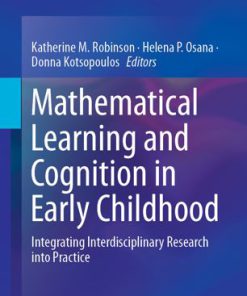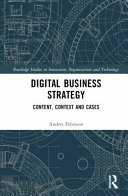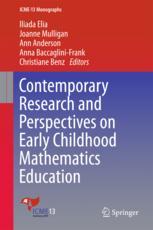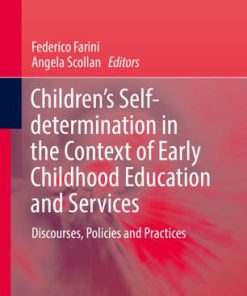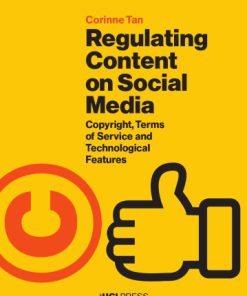Media Exposure During Infancy and Early Childhood The Effects of Content and Context on Learning and Development 1st Edition by Rachel Barr 3319451022 9783319451022
$50.00 Original price was: $50.00.$25.00Current price is: $25.00.
Media Exposure During Infancy and Early Childhood The Effects of Content and Context on Learning and Development 1st Edition by Rachel Barr – Ebook PDF Instant Download/DeliveryISBN: 3319451022, 9783319451022
Full download Media Exposure During Infancy and Early Childhood The Effects of Content and Context on Learning and Development 1st Edition after payment.
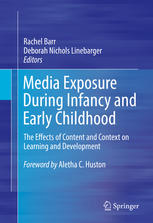
Product details:
ISBN-10 : 3319451022
ISBN-13 : 9783319451022
Author: Rachel Barr
This book discusses the burgeoning world of young children’s exposure to educational media and its myriad implications for research, theory, practice, and policy. Experts across academic disciplines and the media fill knowledge gaps and address concerns regarding apps, eBooks, and other screen-based technologies—which are being used by younger and younger children—and content delivery and design. Current research shows the developmental nuances of the child as learner in home, school, and mobile contexts, and the changes as parenting and pedagogy accommodate the complexities of the new interactive world. The book also covers methods for evaluating the quality of new media and prosocial digital innovations such as video support for separated families and specialized apps for at-risk toddlers. Highlights of the coverage: The role of content and context on learning and development from mobile media. Learning from TV and touchscreens during early childhood Educational preschool programming. How producers craft engaging characters to drive content delivery. The parental media mediation context of young children’s media use. Supporting children to find their own agency in learning. Media Exposure During Infancy and Early Childhood is an essential resource for researchers, clinicians and related professionals, and graduate students in diverse fields including infancy and early childhood development, child and school psychology, social work, pediatrics, and educational psychology.
Media Exposure During Infancy and Early Childhood The Effects of Content and Context on Learning and Development 1st Table of contents:
Chapter 1: The “New” Technology Environment: The Role of Content and Context on Learning and
1.1 Historical Trends
1.2 Mobile Media Trends
1.3 New Media Content
1.3.1 E-Books
1.3.2 Apps
1.4 Context
1.4.1 The Home Context
1.4.2 The School Context
1.4.3 Home–School Context
1.5 Conclusions and Policy Implications
References
Chapter 2: Who’s By Their Side? Questions of Context Deepen the Research on Children and Media
2.1 On-the-Ground Implications
2.2 Going Solo
2.3 Sharing Devices
2.4 When to Share, When to Enable Independent Use, and What Research Is Needed Now
References
Chapter 3: The Dimensional Divide: Learning from TV and Touchscreens During Early Childhood
3.1 Introduction
3.2 Transfer Learning and the Transfer Deficit
3.2.1 Transfer Learning from Television
3.2.2 Taking a Novel Approach: Comparing Transfer of Learning Across Multiple Devices
3.3 A Coherent Theory: How Child Constraints, Perceptual Content and Social Context Combine to Res
3.3.1 Perceptual Factors
3.3.2 Social Factors
3.3.3 Developmental Constraints: Cognitive Factors
3.3.4 Developing a Coherent Theory
3.4 Enhancing Transfer Learning: Strategies for Parents and Early Educators
3.5 Conclusion
References
Chapter 4: Bridging the Dimensional Divide in the Real World: Commentary on Chapter 3
4.1 Technology in the Classroom
4.2 Importance of Social Scaffolding
4.3 Effective App Features for Learning
4.4 Bridging the Real and Digital Worlds
4.5 Defining “Educational”
References
Chapter 5: The Role of Online Processing in Young Children’s Learning from Interactive and Non
5.1 Introduction
5.2 Online Processing During Video Viewing
5.2.1 Selectively Attending to the Television Screen
5.2.2 Visually Selecting Specific Screen Content
5.2.3 Sustaining Attention While Viewing Video
5.2.4 Summary of Research on Online Processing of Television
5.3 Conditions Under Which Toddlers Can Learn from Video
5.3.1 Clarifying the Symbolic Relation Between Video and Real-Life Events
5.3.2 Reducing Cognitive Load
5.3.3 Incorporating Social Interactivity
5.3.4 Providing Nonsocial Contingency via Interactive Media
5.3.5 Summary of Research on Learning from Video
5.4 Conclusions and Future Research Agenda
References
Chapter 6: What’s in a Look? How Young Children Learn from Screen Media and Implications for
References
Chapter 7: What Makes Preschool Educational Television Educational? A Content Analysis of Literacy
7.1 Educational Television
7.2 Molecular Components of Educational Television
7.2.1 Instructional Strategies
7.2.1.1 Cognitive Instructional Strategies
7.2.1.2 Language Instructional Strategies
7.2.1.3 Code-Related Literacy Instructional Strategies
7.2.2 Character Interactional Quality
7.3 Molar Components of Educational Television
7.3.1 Target Viewer Age
7.3.2 Program Structure
7.3.3 Curriculum Emphasis
7.4 The Present Study
7.5 Method
7.5.1 Sample
7.5.2 Content Coding
7.5.2.1 Reliability
7.5.3 Analytical Approach
7.6 Results
7.6.1 Overall Patterns
7.6.2 Molar Components: Target Viewer Age
7.6.3 Molar Components: Program Structure
7.6.4 Molar Components: Curriculum Emphasis
7.7 Discussion
7.7.1 Molecular Components of Educational Television: Embedding Instructional Strategies
7.7.1.1 Cognitive Instructional Strategies
7.7.1.2 Literacy and Language Promoting Strategies
7.7.1.3 Interactional Quality
7.7.2 Molar Components of Educational Television: Target Viewer Age, Program Structure, and Curric
7.7.2.1 Target Viewer Age
7.7.2.2 Program Structure
7.7.2.3 Curriculum Emphasis
7.7.3 Five Key Considerations for Parents and Producers
References
Chapter 8: Is Preschool Programming Educational?—Commentary on Chapter 7
8.1 Key Learning Strategies and Curriculum Emphasis: Super WHY!
8.2 Character Interactional Quality and Social Competence: Daniel Tiger’s Neighborhood
8.3 Program Structure: The Importance of the Pause
8.4 My Recipe for an Educational Show
References
Chapter 9: Media Characters, Parasocial Relationships, and the Social Aspects of Children’s Lea
9.1 What Is a Parasocial Relationship?
9.2 Social Aspects of Learning
9.3 Learning from Current Technologies in Children’s Homes and Lives
9.3.1 Traditional Observational Media
9.3.1.1 Social Contingency
9.3.1.2 Social Meaningfulness
9.3.2 Computers
9.3.3 Touchscreen Tablet Devices
9.4 The Future of Parasocial Relationships: Robotics and Intelligent Agents
9.4.1 Robots
9.4.2 Intelligent Agents
9.5 Conclusion
References
Chapter 10: Character Development in Practice: How Producers Craft Engaging Characters to Drive Co
10.1 How Character Development Works in Practice
10.2 Unresolved Questions
10.3 Conclusion
References
Chapter 11: Screen Media and Parent–Child Interactions
11.1 TV Coviewing Behavior
11.1.1 Attention
11.1.2 Parent Engagement During TV Coviewing
11.1.3 Parent Language During Coviewing
11.2 Parent Language During Book Reading Compared to TV Coviewing
11.2.1 Traditional Paper Storybooks
11.2.2 E-books
11.3 New Media Are Reshaping Family Interactions
11.4 Conclusions and Needed Research
References
Chapter 12: Context Matters: How Co-using Screen Media Impacts Young Children—Commentary on Chapt
12.1 Key Findings
12.1.1 Co-viewing Is Not an Intentional Strategy
12.1.2 TV Co-viewers Influence Each Other’s Attention and Reactions to the Program
12.1.3 Parents Engage Less with Their Children When the TV is on, Even When Co-viewing Child-Direc
12.1.4 Content Can Influence Parent Behavior
12.1.5 Media Has the Potential to Limit, But also Enhance Language Development
12.1.6 Books Compared to TV
12.1.7 Learning from E-books
12.2 Impact of Media Use on Parenting and the Parent–Child Relationship
12.3 The Impact of Parents Own Media Use
12.3.1 Ways New Media Forges Connections
12.4 Conclusions: Use Media Mindfully
References
Chapter 13: The Parental Media Mediation Context of Young Children’s Media Use
13.1 The Parental Media Mediation Context of Young Children’s Media Use
13.1.1 Social Context and Media Use
13.1.2 Parental Media Mediation
13.2 Method
13.2.1 Sample and Procedure
13.2.2 Measures
13.2.2.1 Parental Media Mediation
13.2.2.2 Media Use
13.2.3 Analytic Approach
13.3 Results
13.3.1 Parental Media Mediation Descriptive Statistics
13.3.2 Relationship between Parental Media Mediation and Media Use
13.4 Discussion
13.4.1 Restrictive Mediation
13.4.2 Active Mediation
13.4.3 Implications, Future Directions, and Concluding Thoughts
References
Chapter 14: Parental Mediation in an Evolving Media Landscape—Commonalities, Contrasts, and Imp
References
Chapter 15: Building Family Relationships from a Distance: Supporting Connections with Babies and
15.1 Media Interventions
15.1.1 Noncontingent Unidirectional Video Interventions
15.1.2 Evaluating Video Chat as a Novel Approach
15.2 The Content and Context of Video Chat
15.2.1 Comparing Video Chat to Other Forms of Technology
15.2.2 Comparing Video Chat to Face-to-Face Interactions
15.2.2.1 Physical Contact
15.2.2.2 Visual Cues
15.2.2.3 Social Contingency and Reciprocity
15.3 Conclusion
References
Chapter 16: Smarter, Stronger, Kinder—Developing Effective Media-Based Tools for At-Risk Populati
16.1 Sesame Beginnings
16.2 Little Children, Big Challenges
16.3 Emerging Technologies as Parenting Tools
References
Chapter 17: Putting the Education Back in Educational Apps: How Content and Context Interact to
17.1 The Context of the 170,000 App Problem and a Potential Solution
17.2 Pillars of Learning
17.2.1 Active—Learning Is Maximized When Children Are “Minds-on”
17.2.1.1 Content
17.2.1.2 Context
17.2.2 Engaged: Learning Is Maximized When Distractions Are Limited
17.2.2.1 Content
17.2.2.2 Context
17.2.3 Meaningful: Learning Is Maximized When the Material Links to Children’s Lives
17.2.3.1 Content
17.2.3.2 Context
17.2.4 Socially Interactive: Learning Is Maximized When Supported by Social Relationships (Either i
17.2.4.1 Content
17.2.4.2 Context
17.3 Scaffolded Exploration Towards a Learning Goal
17.4 Final Thoughts
References
Chapter 18: Supporting Children to Find Their Own Agency in Learning: Commentary on Chapter 17
18.1 Reframing Innovation and Technology
18.2 Tools Are Not Inherently Educational: How to Foster Active Meaningful Engagement
18.3 The Goldilocks Effect
References
Chapter 19: Conclusions: Making Screens Make Sense for Young Children
19.1 Where Do We Go From Here?
19.2 Method and Measurement Challenges
19.3 Final Thoughts
People also search for Media Exposure During Infancy and Early Childhood The Effects of Content and Context on Learning and Development 1st:
what is infancy and early childhood
media exposure and child development
infant media exposure and toddler development
effects of social media exposure on child development
media influences on child development
Tags: Media Exposure, During Infancy, Early Childhood, The Effects, Development, Rachel Barr
You may also like…
Education Studies & Teaching - Pre-school & Early Learning
Business & Economics - E-Commerce
Digital Business Strategy : Content, Context and Cases 1st Edition Pehrsson
Education Studies & Teaching
Business & Economics
Regulating Content On Social Media Copyright Terms Of Service And Technological Features Corinne Tan
Education Studies & Teaching - School Education & Teaching
Comparative Perspectives on Early Childhood Education Reforms in Australia and China Josephine Ng





